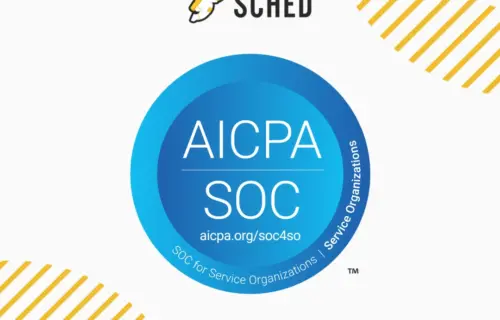Gathering event feedback is a skill that must be mastered. As a planner, it’s essential to understand attendee feedback in order to improve future events and ensure attendee satisfaction.
In this article, we will explore common mistakes and provide solutions to help you avoid them. By implementing these strategies, you can gather valuable insights and turn feedback into actionable improvements.
The importance of gathering attendee feedback
Table of contents
- 1 The importance of gathering attendee feedback
- 2 Lack of clear objectives & strategy for feedback collection
- 3 Poor timing & follow-up: When and how to ask for feedback
- 4 Overwhelming & lengthy surveys: Keep it concise and engaging
- 5 Ineffective survey design: Crafting questions for actionable insights
- 6 Ignoring different feedback channels: Beyond traditional surveys
- 7 Failing to address anonymity & privacy concerns
- 8 Neglecting to act on feedback: Closing the feedback loop
- 9 Best practices for gathering attendee feedback: Tips for success
- 10 Leveraging technology for seamless feedback collection
- 11 Conclusion
Before delving into the mistakes event planners make, let’s first understand why gathering attendee feedback is so important. Let’s look at numbers to drive our point home:
- Improved Event Experience: Gathering attendee feedback allows event organizers to gain valuable insights into the attendees’ experience. 68% of event professionals consider attendee feedback to be essential for improving future events.
- Tailored Content and Programming: Attendee feedback provides valuable input for shaping the content and programming of future events. 73% of event organizers believe that attendee feedback is crucial for understanding their preferences and interests.
- Higher Attendee Satisfaction: Gathering attendee feedback helps measure and improve attendee satisfaction levels. 84% of event professionals consider attendee satisfaction to be the most critical measure of event success.
- Enhanced Networking Opportunities: Attendee feedback can shed light on the networking experiences and opportunities at an event. 72% of event professionals believe that networking is a top reason why attendees participate in events.
Lack of clear objectives & strategy for feedback collection
One common mistake event planners make is not having clear objectives and a strategy in place for feedback collection. Without a clear purpose, the feedback you gather may be scattered and misaligned with your event goals.
To avoid this, start by clearly defining what you want to achieve through feedback collection. Is it to measure attendee satisfaction, gather suggestions for improvement, or evaluate specific aspects of the event?
Once you have your objectives in place, develop a strategy for feedback collection. Determine the best methods and channels to reach your attendees, whether it’s through online surveys, in-person interviews, or feedback forms.
Solution: Create a clear feedback collection plan that aligns with your event objectives. Define the methods and channels you will use, identify the right timing, and ensure that you have the necessary resources and tools to collect and analyze feedback effectively.
Poor timing & follow-up: When and how to ask for feedback
Timing is everything – and it can go wrong in more ways than one. Simply, it’s crucial when it comes to gathering attendee feedback.
Asking for feedback immediately after the event may lead to biased or rushed responses, as attendees may still be processing their experience. On the other hand, waiting too long may result in attendees forgetting important details or losing interest in providing feedback.
Solution: To strike the right balance, consider collecting feedback in multiple stages. Implement a feedback collection timeline that includes both immediate and post-event surveys.
Capture immediate impressions by providing on-site feedback forms or mobile surveys. Use different methods to capture feedback at different stages, allowing attendees time to reflect while the event is still fresh in their minds.
Follow up with a more comprehensive post-event survey a few days or weeks after the event, giving attendees time to reflect on their experience. Additionally, send personalized follow-up emails to attendees who haven’t responded to remind them to provide their feedback. Keep your attendees engaged and connected to your event by offering post-event content.
Overwhelming & lengthy surveys: Keep it concise and engaging
We hate to break it to you, but most people find giving feedback annoying.
It’s not a surprise then that one of the biggest turn-offs for attendees when it comes to providing feedback is facing overwhelming and lengthy surveys.
Lengthy surveys can lead to low response rates and incomplete responses, as attendees may lose interest or not have enough time to complete them. It’s important to keep your surveys concise, engaging, and easy to navigate.
Solution: Design surveys that are concise, engaging, and easy to navigate.
Focus on asking the most essential questions that will provide you with actionable insights. Use a mix of multiple-choice, rating scales, and open-ended questions to gather both quantitative and qualitative data.
Ensure that the survey is visually appealing, with clear instructions and intuitive navigation. Consider using skip-logic to personalize the survey experience and avoid asking irrelevant questions.
Prioritize the most important questions to gather actionable insights while respecting the time and effort of your attendees.
Ineffective survey design: Crafting questions for actionable insights
Of course, you want to know if your attendees enjoy your event. But how much did they enjoy it? What were their key takeaways? Which session speakers were most popular? These are great data points to wave in front of (potential future) sponsors.
Even with a concise survey, the effectiveness of your feedback collection depends on the quality of your questions. Poorly crafted questions can lead to vague or misleading responses, making it challenging to derive meaningful insights.
Solution: It’s essential to design questions that are clear, specific, and actionable. When designing survey questions, consider the goal of each question and what kind of response you are looking for. Invest time in crafting well-designed survey questions that are clear, specific, and unbiased.
Use neutral language and avoid jargon or technical terms that may confuse attendees. Consider including open-ended questions to allow attendees to provide detailed feedback and suggestions. Avoid leading or biased questions that steer respondents towards a particular answer.
Test your questions with a small group of attendees before launching the survey to ensure they are easily understood and can provide actionable insights.
Ignoring different feedback channels: Beyond traditional surveys
While surveys are a popular method for gathering feedback, relying solely on them may limit the insights you can gather. There are other valuable feedback channels that event planners often overlook.
Different customers have varying channel preferences when it comes to providing feedback. According to a study by Dimensional Research:
- 50% of customers prefer to give feedback through email
- 29% prefer online surveys
- 13% prefer phone calls
Ignoring certain feedback channels limits the opportunities for customers to express their opinions, reducing the overall feedback volume and potentially missing valuable insights.
And in the modern world, you have social media platforms, event apps, and online forums that can provide real-time feedback and allow attendees to engage in conversations with each other.
Solution: Go beyond traditional surveys and incorporate alternative feedback channels. Monitor social media, event apps, and chat channels to gather real-time feedback and engage attendees in conversations about their experiences.
Encourage attendees to share their experiences on social media using event-specific hashtags. Keep an eye on online forums and event app discussions to identify recurring themes or areas for improvement.
By tapping into these channels, you can gather a wider range of feedback and engage attendees in meaningful conversations.
Failing to address anonymity & privacy concerns
Anonymity and privacy concerns can be major barriers to obtaining honest and constructive feedback. Attendees may hesitate to provide candid feedback if they fear their identity will be revealed or their data will be mishandled. Failing to address these concerns can result in skewed or incomplete feedback.
This isn’t just a red tape issue – this matters to people: According to a survey by PwC, 92% of consumers said that they would trust a company more if it prioritized their data privacy.
Solution: To ensure anonymity and privacy, clearly communicate how you will protect attendee data and ensure confidentiality. Address anonymity and privacy concerns upfront and communicate your data protection measures.
Assure attendees that their feedback will be aggregated and anonymized and that their personal information will not be shared without consent.
Use secure survey platforms or event management software that prioritizes attendee privacy. Consider using third-party survey platforms or event management software that has built-in privacy measures to further safeguard attendee data.
Neglecting to act on feedback: Closing the feedback loop
Our final point comes back to the questions we touched on at the start – why are we bothering with event reporting and analytics? Failing to act on feedback is like buying a gym membership, snazzy workout gear, and never working out.
It’s a waste of your and your attendee’s energy if your collected feedback is not put to good use.
Collecting feedback is only the first step. Neglecting to act on the feedback you receive can leave attendees feeling unheard and frustrated. Closing the feedback loop is essential for maintaining attendee trust and loyalty.
For example, a survey by Microsoft discovered that 77% of customers have a more favorable view of companies that solicit and respond to customer feedback. Ignoring different feedback channels can lead to customer dissatisfaction and frustration.
Solution: Once you have collected feedback, analyze and interpret the data to identify key insights and actionable recommendations.
Create a structured process for your event reporting process and act on the feedback you receive. Share the results with your team, stakeholders, and sponsors. Develop an action plan to address the feedback.
Communicate the changes and improvements you will be implementing based on the feedback received.
Finally, follow up with attendees to let them know how their feedback influenced the event and express gratitude for their participation.
Best practices for gathering attendee feedback: Tips for success
In addition to avoiding the common mistakes mentioned above, here are some best practices to keep in mind when gathering attendee feedback:
- Be proactive in seeking feedback: Don’t wait for attendees to come to you. Actively encourage and remind them to provide feedback throughout the event.
- Offer incentives: Consider offering small incentives, such as discounts or exclusive content, to motivate attendees to provide feedback.
- Segment your audience: Tailor your feedback collection approaches based on attendee demographics or event-specific criteria to gather more targeted insights.
- Regularly review and iterate your feedback collection process: Continuously evaluate the effectiveness of your feedback collection methods and make improvements based on attendee responses and industry trends.
Leveraging technology for seamless feedback collection
To streamline the feedback collection process, consider leveraging event management software that offers built-in survey tools and data analysis capabilities.
These tools can automate survey distribution, provide deeper analytics, and help you visualize data more effectively.
Event management software also allows you to integrate feedback data with other event metrics, providing a comprehensive view of your event’s success.
Conclusion
Even the most experienced event planners make mistakes when it comes to gathering feedback. The key is to learn from these mistakes and continuously improve your feedback collection process. Reflect on past feedback fiascos and identify the areas where you can make changes to avoid similar pitfalls in the future.
By implementing these strategies, you can gather valuable insights and turn feedback into actionable improvements.
Looking for a streamlined platform to help you collect attendee feedback? Get started with Sched. Claim your free trial.








